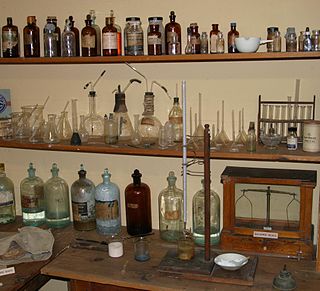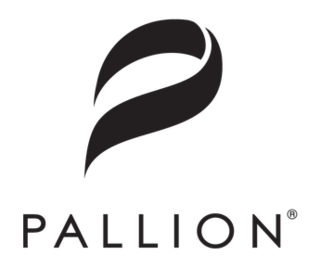Related Research Articles

The Krugerrand is a South African coin, first minted on 3 July 1967 to help market South African gold and produced by Rand Refinery and the South African Mint. The name is a compound of Paul Kruger, the former President of the South African Republic, and rand, the South African unit of currency. On the reverse side of the Krugerrand is a pronking springbok, South Africa's national animal.

Precious metals are rare, naturally occurring metallic chemical elements of high economic value. Precious metals, particularly the noble metals, are more corrosion resistant and less chemically reactive than most elements. They are usually ductile and have a high lustre. Historically, precious metals were important as currency but are now regarded mainly as investment and industrial raw materials. Gold, silver, platinum, and palladium each have an ISO 4217 currency code.

Bullion is non-ferrous metal that has been refined to a high standard of elemental purity. The term is ordinarily applied to bulk metal used in the production of coins and especially to precious metals such as gold and silver. It comes from the Anglo-Norman term for a melting-house where metal was refined, and earlier from French bouillon, "boiling". Although precious metal bullion is no longer used to make coins for general circulation, it continues to be held as an investment with a reputation for stability in periods of economic uncertainty. To assess the purity of gold bullion, the centuries-old technique of fire assay is still employed, together with modern spectroscopic instrumentation, to accurately determine its quality.
The fineness of a precious metal object represents the weight of fine metal therein, in proportion to the total weight which includes alloying base metals and any impurities. Alloy metals are added to increase hardness and durability of coins and jewelry, alter colors, decrease the cost per weight, or avoid the cost of high-purity refinement. For example, copper is added to the precious metal silver to make a more durable alloy for use in coins, housewares and jewelry. Coin silver, which was used for making silver coins in the past, contains 90% silver and 10% copper, by mass. Sterling silver contains 92.5% silver and 7.5% of other metals, usually copper, by mass.
A bullion coin is a coin struck from highly refined precious metal (bullion) and kept as a store of value or an investment rather than used in day-to-day commerce. A bullion coin is distinguished by its weight and fineness on the coin. Unlike rounds, bullion coins are minted by government mints and have a legal tender face value. Bullion coins can have fineness ranging from 91.9% to 99.99% purity.

The Perth Mint is Australia's official bullion mint and wholly owned by the Government of Western Australia. Established on 20 June 1899, two years before Australia's Federation in 1901, the Perth Mint was the last of three Australian colonial branches of the United Kingdom's Royal Mint intended to refine gold from the gold rushes and to mint gold sovereigns and half-sovereigns for the British Empire. Along with the Royal Australian Mint, which produces coins of the Australian dollar for circulation, the Perth Mint is the older of Australia's two mints issuing coins that are legal tender.

A gold bar, also known as gold bullion or a gold ingot, refers to a quantity of refined metallic gold that can be shaped in various forms, produced under standardized conditions of manufacture, labeling, and record-keeping. Larger varieties of gold bars, produced by casting molten metal into molds, are called ingots. Smaller bars are often created through minting or stamping from rolled gold sheets. Central banks typically hold the standard 400-troy-ounce Good Delivery gold bar in their gold reserves and it is widely traded among bullion dealers. Additionally, the kilobar, weighing 1,000 grams, and the 100-troy-ounce gold bar are popular for trading and investment due to their more manageable size and weight. These bars carry a minimal premium over the spot price of gold, facilitating small transfers between banks and traders. While most kilobars have a flat appearance, a preference for brick-shaped bars exists among some investors, particularly in Europe.

Silver may be used as an investment like other precious metals. It has been regarded as a form of money and store of value for more than 4,000 years, although it lost its role as legal tender in developed countries when the use of the silver standard came to an end in 1935. Some countries mint bullion and collector coins, however, such as the American Silver Eagle with nominal face values. In 2009, the main demand for silver was for industrial applications (40%), jewellery, bullion coins, and exchange-traded products. In 2011, the global silver reserves amounted to 530,000 tonnes.
A doré bar is a semi-pure alloy of gold and silver. It is usually created at the site of a mine and then transported to a refinery for further purification.

The London Bullion Market Association, established in 1987, is the international trade association representing the global Over The Counter (OTC) bullion market, and defines itself as "the global authority on precious metals". It has a membership of approximately 150 firms globally, including traders, refiners, producers, miners, fabricators, as well as those providing storage and secure carrier services.

A metallurgical assay is a compositional analysis of an ore, metal, or alloy, usually performed in order to test for purity or quality.

The Good Delivery specification is a set of rules issued by the London Bullion Market Association (LBMA) describing the physical characteristics of gold and silver bars used in settlement in the wholesale London bullion market. It also puts forth requirements for listing on the LBMA Good Delivery List of approved refineries.
MKS (Switzerland) SA is a trader of precious metals. Based in Geneva, the group employs approximately 1,500 workers. MKS is an associate of the London Bullion Market Association (LBMA), and its subsidiary PAMP has been on the LBMA’s Gold List, widely recognised in the financial services industry as the indicator of quality, since 1987.

The Bottom-blown Oxygen Converter or BBOC is a smelting furnace developed by the staff at Britannia Refined Metals Limited (“BRM”), a British subsidiary of MIM Holdings Limited. The furnace is currently marketed by Glencore Technology. It is a sealed, flat-bottomed furnace mounted on a tilting frame that is used in the recovery of precious metals. A key feature is the use of a shrouded lance to inject oxygen through the bottom of the furnace, directly into the precious metals contained in the furnace, to oxidize base metals or other impurities as part of their removal as slag.

Pallion designs, manufactures, and distributes precious metal products and related services. It is the largest precious metal services group in Australasia. Pallion is the result of the merger in 2014 of the ABC Bullion and Palloys Group of companies founded in 1972 and 1951 respectively. The group maintains its headquarters in Sydney NSW Australia and is a wholly privately owned group of companies with manufacturing facilities and offices in Sydney, Melbourne, Brisbane and Perth in Australia, Hong Kong (SAR), mainland China, Thailand and Western Europe.
PAMP SA is an independently operated precious metals refining and fabricating company and member of the MKS Group. It was established in 1977 in Ticino, Switzerland.
Fidelity Printers and Refiners (FPR) is Zimbabwean security printing and gold refinery company wholly owned by the Reserve Bank of Zimbabwe. The company was established in 1966. FPR operates from a printing and gold refinery plant located in Msasa Industrial area in Harare and a coin minting facility in Bulawayo.

Valcambi is a precious metals refining company located in Balerna, Switzerland, and a subsidiary of Rajesh Exports Limited. Valcambi is owned by European Gold Refineries, which is owned by Global Gold Refineries AG, which in turn is 95% owned by REL Singapore PTE Ltd. and 5% by Rajesh Exports Limited India. Valcambi is thus 100% controlled by Rajesh Exports, the parent company of REL Singapore.

Baird & Co. is the largest gold refiner and the only full-service bullion merchant in the United Kingdom. Founded by Tony Baird in 1967; Baird & Co. initially dealt in numismatic coins expanding into bullion bars and jewellery as time progressed. The company is headquartered in Hatton Garden, London, operating out of a 30,000 sq foot high-security refinery in Beckton and an international branch in Singapore.
Kundan Group was established in 1971 and is headquartered in New Delhi, India. The company has a multi-business portfolio inclusive of gold refinery, cosmetics, chemicals, polymers, agro-commodities, precious metals, petroleum products, energy, and the import of bullion and pharmaceutical items.
References
- ↑ Josey, Alex (2009). Blood Lust: Murder of A Beauty Queen / The Gold Bar Murder. Marshall Cavendish International Asia. p. 319. ISBN 9789814351843.
- 1 2 Bott, Sandra (2013). The Global Gold Market and the International Monetary System from the Late 19th Century to the Present: Actors, Networks, Power. London, UK: Palgrave Macmillan. p. 224. ISBN 9781137306715.
- ↑ "The Design and Layout of the Rand Gold Refinery". The S.A. Mining and Engineering Journal. XXXIII (1608). Johannesburg: 1557. 22 July 1922.
- ↑ Van Dyke, Donald L. (2009). Fortune Favours the Bold: an African Aviation Odyssey. Xlibris Corporation. p. 456. ISBN 9781462813902.
- ↑ Warwick-Ching, Tony (2014). The International Gold Trade. Sawston, Cambridgeshire: Woodhead Publishing. p. 304. ISBN 9781845699178.